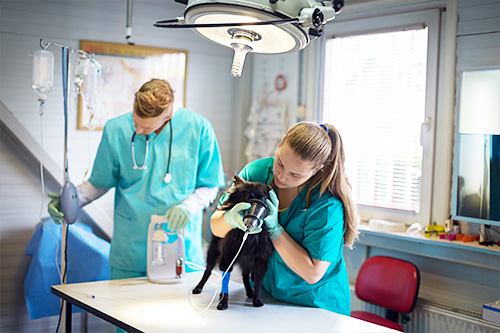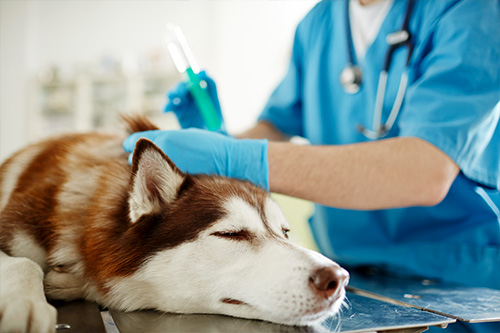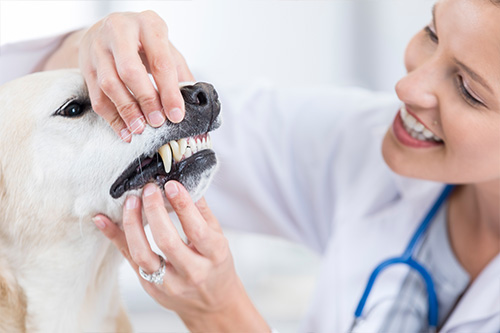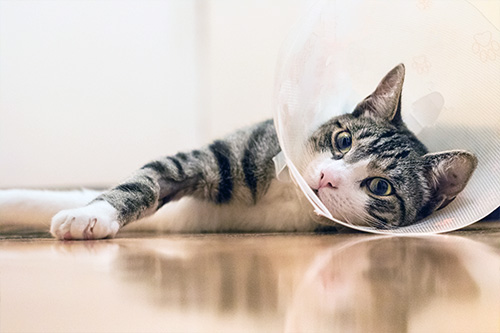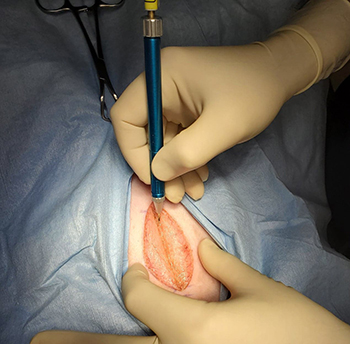
All of our patients undergo CO2 laser surgery vs traditional surgery with a scalpel or scissors. Some of the benefits include Minimized Bleeding! As it cuts, the laser beam seals small blood vessels. This drastic reduction in bleeding enables a number of new surgical procedures that are not practical or even possible with a scalpel, such as tumors and lesions inside the throat, nose and oral cavity, some types of eye surgery, nasal hyperkeratosis treatment, and many more. Better visualization of the surgical site allows the veterinarian to cut more precisely, avoiding unnecessary trauma to healthy surrounding tissues. In addition, some procedures do not require sutures, when done with the laser (e.g., stenotic nares repair, spaying, and others). Excellent visibility provides another huge advantage of CO2 laser surgery, i.e. the veterinarian completes the surgery faster. Shorter procedures shorten anesthesia time, reducing the risks of anesthesia. In addition, some laser-assisted procedures can be performed in conjunction with others to save the patient time under anesthesia (for instance, stenotic nares repair may be combined with spaying or neutering, etc.) Finally, better visibility ensures better esthetic results.
Less Pain!
The CO2 laser beam seals nerve endings and lymphatics, resulting in less post-operative swelling and pain. The patient experiences a far more comfortable post-operative recovery.
Reduced Risk of Infection!
Sanitizing effect is one of the unique features of the CO2 laser beam. It efficiently destroys bacteria in its path (sanitizing effect). Also, CO2 laser surgery is performed in a non-contact mode – the laser tip does not touch the target tissue during surgery, which minimizes the risk of infection even more.
Faster Recovery Time!
Reduced risk of infection, less bleeding, pain and swelling, less time under anesthesia, often allows the patient a speedy recovery after the surgery and pets walk, eat, drink, or play much sooner than after conventional scalpel surgery.
Additionally, all of our patients receive a post-operative Cold Laser Therapy treatment while they are recovering from anesthesia.
For more information on Laser surgery click here.

